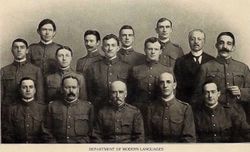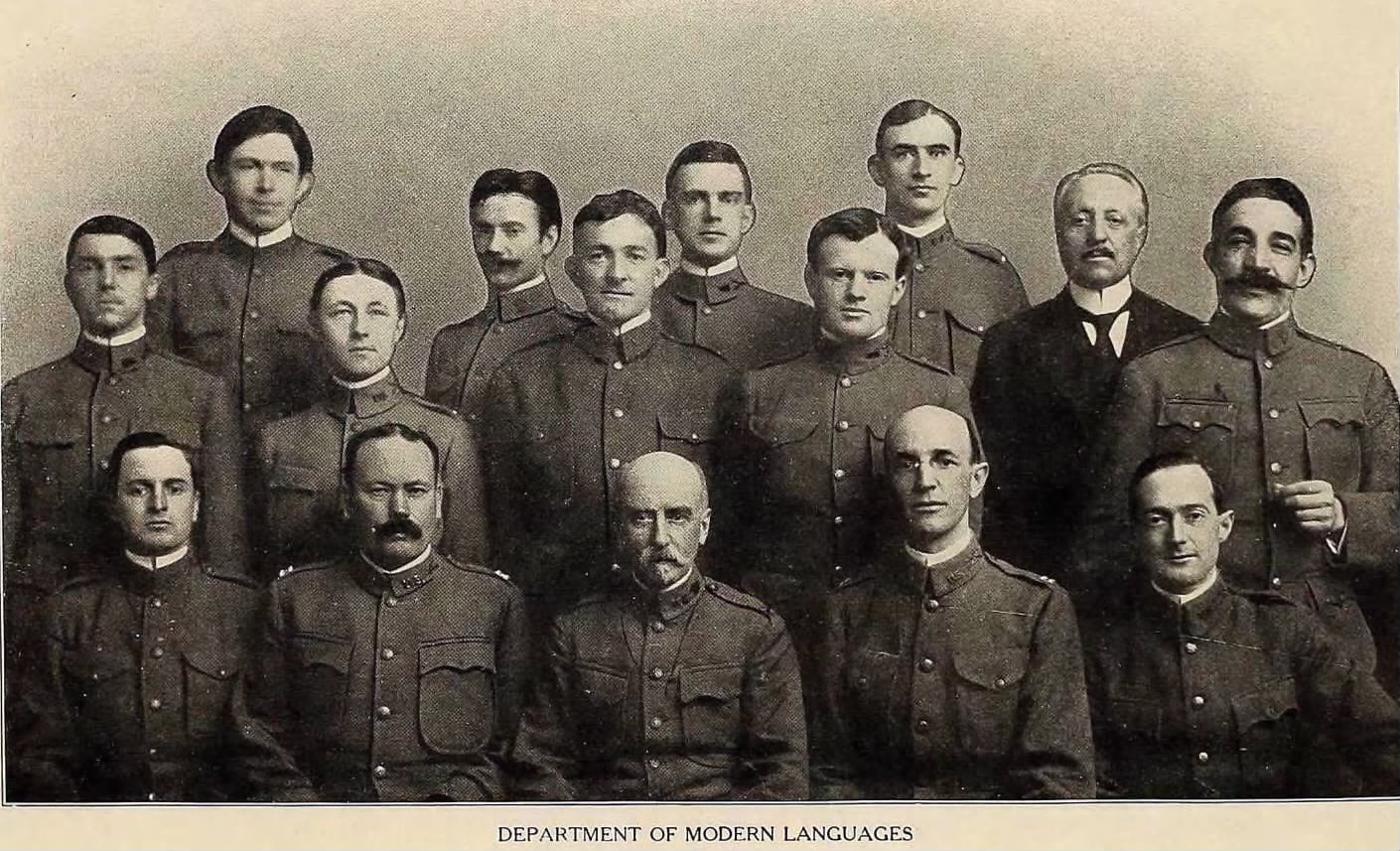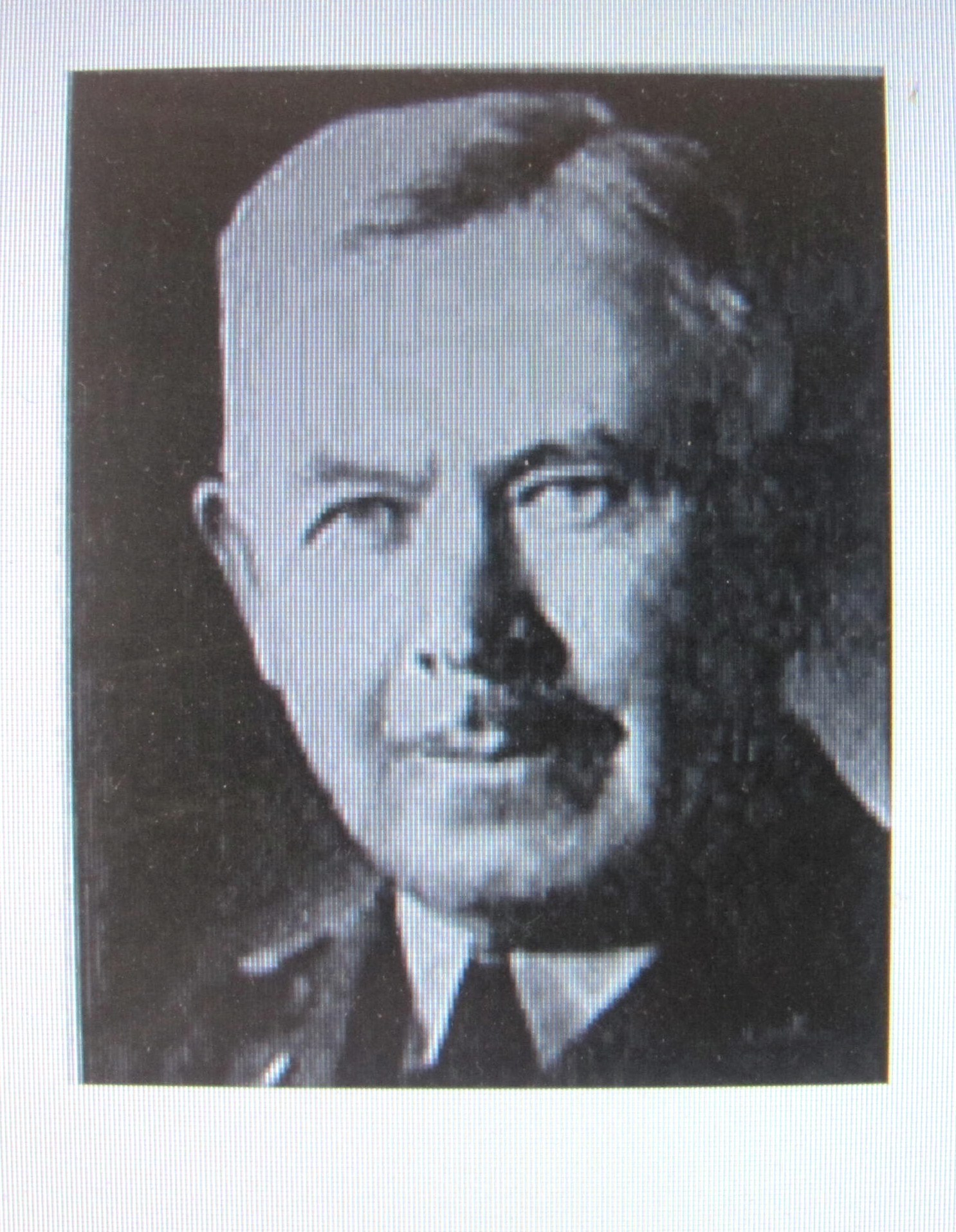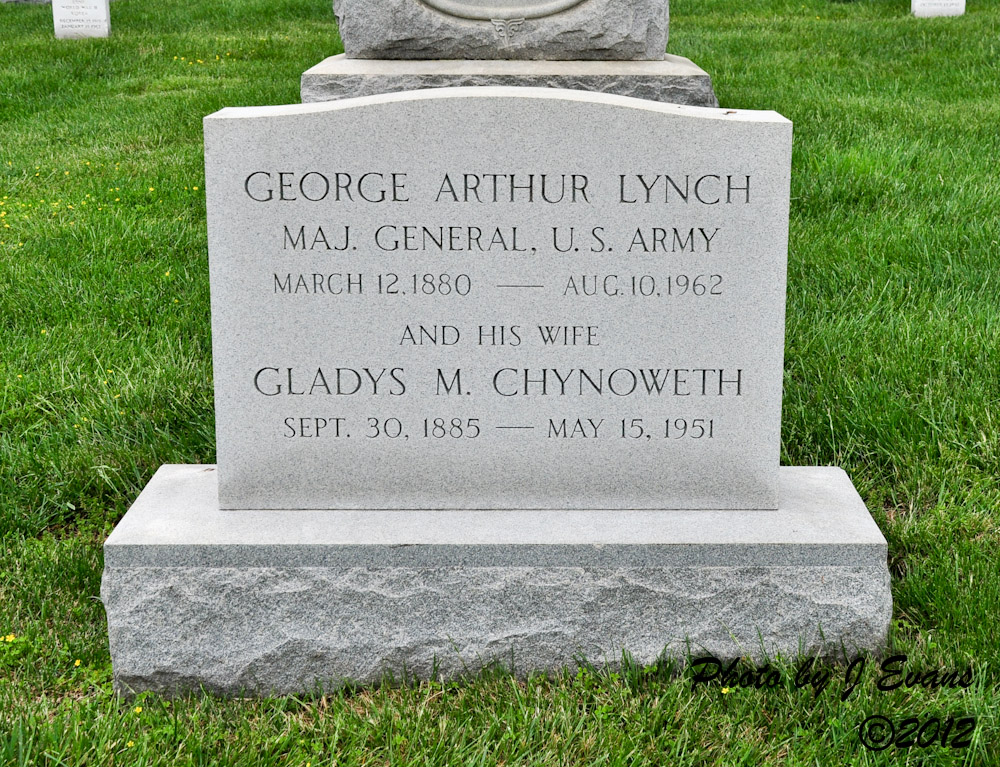He was born at Blairstown, Iowa, on 12 March 1880, where he lived until his appointment to the United States Military Academy in 1899. He graduated from the Academy in 1903 and spent the following several years in active field service in the Philippine campaigns. Returning to the United States in 1905, he married Gladya Chynoweth, the daughter of Otto Grethen Chynoweth, one of his senior officers during his Philippine service, who was also a graduate of USMA.
After a variety of duties as troop commander and War Department General Staff officer, he was assigned overseas with the 80th Division during World War I, where he participated in the Meuse-Argonne offensive. Upon return to the US he again had varied assignments in troop command and War Department General Staff. He graduated from the Army War College in 1930 and was assigned for the third time to the Philippines, this time as executive officer of the 31st US Infantry in Manila. This duty took him to China in 1932 when the regiment was moved to Shanghai to counter the Japanese threat to US interests there. Then followed a tour as G2 of I Corps Area at Governors Island, N.Y. During this period, a classmate, General Hugh Johnson, called him to Washington to assist in the critical work of the National Recovery Administration, the “Blue Eagle” of depression years. He returned to the Orient in 1934, this time as commanding officer of the 15th US Infantry in Tientsin, China. In 1937 he was promoted to Major General as Chief of Infantry in the War Department.
He retired in 1941 and selected Orlando, Fla., for his home. There he remained until his death. He is survived by his widow Mildred Pelzer Lynch; three sons, Maj. Gen. George E. Lynch (Ret), of Columbus, Ga., Mr. Bradford C. Lynch, and Brig. Gen. James H. Lynch, both of Washington, D.C.; his daughter, Mrs. Howell H. Jordan, of Cocoa Beach, Fla.; his sister, Mrs. Ralph Wilbur, of Durham, N.C.; and seven grandchildren.
For his service during World War I he was awarded the Distinguished Service Medal.
His citation reads:
“For exceptionally meritorious and distinguished services, as a member of the Training Section, General Headquarters, he was chiefly responsible for the revision of the Infantry Drill Regulations. In this important task he displayed a broad grasp of the tactical lessons of the war and showed sound judgment in adapting their principles to American needs, capabilities, and characteristics, thereby rendering services of signal worth to the American Expeditionary Forces. During his term of office as Chief of Infantry he was vitally interested in, and chief proponent of the development of Airborne forces in the US Army. He also fostered the creation of the famous ‘jeep,’ the work-horse tactical vehicle of World War II and later. These two achievements were important factors in the success of US forces in World War II.” Interment was in Arlington National Cemetery.
He was born at Blairstown, Iowa, on 12 March 1880, where he lived until his appointment to the United States Military Academy in 1899. He graduated from the Academy in 1903 and spent the following several years in active field service in the Philippine campaigns. Returning to the United States in 1905, he married Gladya Chynoweth, the daughter of Otto Grethen Chynoweth, one of his senior officers during his Philippine service, who was also a graduate of USMA.
After a variety of duties as troop commander and War Department General Staff officer, he was assigned overseas with the 80th Division during World War I, where he participated in the Meuse-Argonne offensive. Upon return to the US he again had varied assignments in troop command and War Department General Staff. He graduated from the Army War College in 1930 and was assigned for the third time to the Philippines, this time as executive officer of the 31st US Infantry in Manila. This duty took him to China in 1932 when the regiment was moved to Shanghai to counter the Japanese threat to US interests there. Then followed a tour as G2 of I Corps Area at Governors Island, N.Y. During this period, a classmate, General Hugh Johnson, called him to Washington to assist in the critical work of the National Recovery Administration, the “Blue Eagle” of depression years. He returned to the Orient in 1934, this time as commanding officer of the 15th US Infantry in Tientsin, China. In 1937 he was promoted to Major General as Chief of Infantry in the War Department.
He retired in 1941 and selected Orlando, Fla., for his home. There he remained until his death. He is survived by his widow Mildred Pelzer Lynch; three sons, Maj. Gen. George E. Lynch (Ret), of Columbus, Ga., Mr. Bradford C. Lynch, and Brig. Gen. James H. Lynch, both of Washington, D.C.; his daughter, Mrs. Howell H. Jordan, of Cocoa Beach, Fla.; his sister, Mrs. Ralph Wilbur, of Durham, N.C.; and seven grandchildren.
For his service during World War I he was awarded the Distinguished Service Medal.
His citation reads:
“For exceptionally meritorious and distinguished services, as a member of the Training Section, General Headquarters, he was chiefly responsible for the revision of the Infantry Drill Regulations. In this important task he displayed a broad grasp of the tactical lessons of the war and showed sound judgment in adapting their principles to American needs, capabilities, and characteristics, thereby rendering services of signal worth to the American Expeditionary Forces. During his term of office as Chief of Infantry he was vitally interested in, and chief proponent of the development of Airborne forces in the US Army. He also fostered the creation of the famous ‘jeep,’ the work-horse tactical vehicle of World War II and later. These two achievements were important factors in the success of US forces in World War II.” Interment was in Arlington National Cemetery.
Gravesite Details
M/GEN USA
Family Members
Sponsored by Ancestry
Advertisement
Explore more
Sponsored by Ancestry
Advertisement












